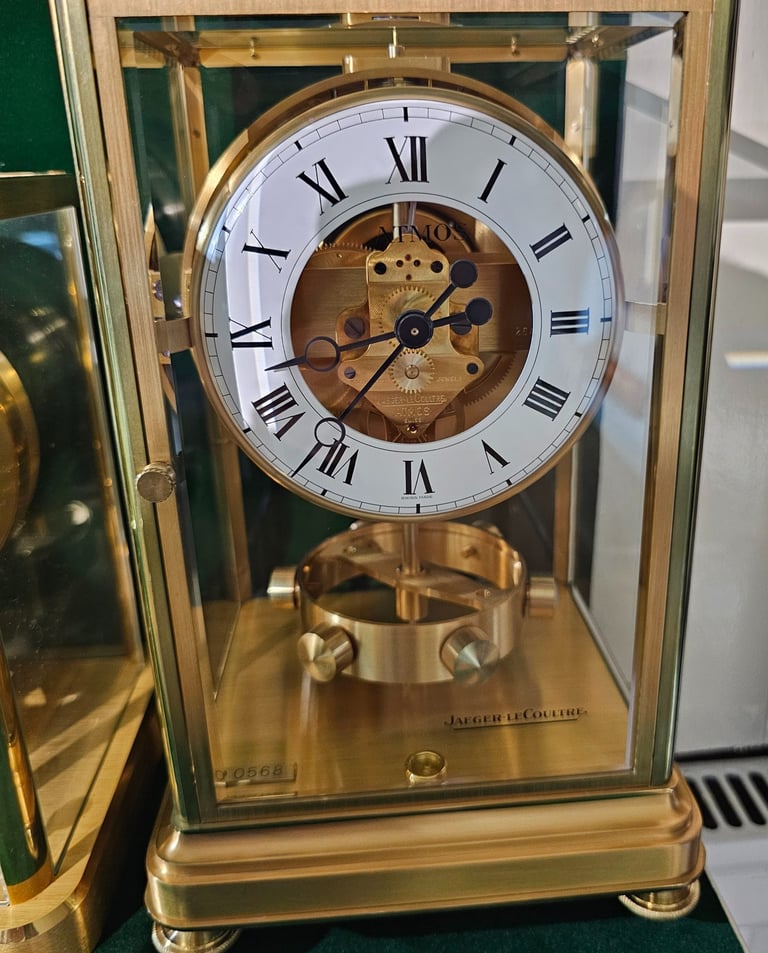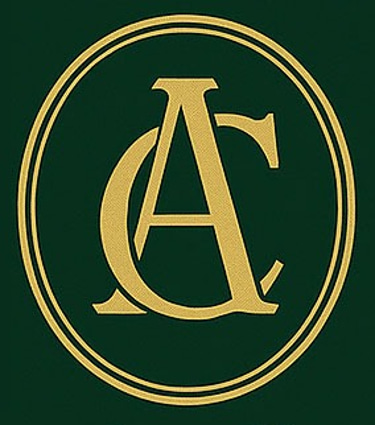AtmosClock.co.uk
Atmos Clock Range
Explore the range of classic Atmos clocks, featuring unique designs and exceptional craftsmanship for every space.


Model History and numbers...
Jean-Leon Reutter, in France, designed the Atmos Clock in 1927 and this is referred too as the Atmos 0. These prototypes were never sold and never called the Atmos 0 at that time.
His clocks were driven by a "mercury in glass" expansion device which rotated a cylinder which wound the mainspring by ratchet. The mechanism operates on temperature change only. The clocks are slightly different to the later Atmos models in minor details of escapement.
On June 01, 1929, Compagnie generale de radio (CGR) created a department devoted to the manufacture and sales of the Atmos clock. Jean-Leon Reutter was appointed to manage that department. It is unclear how many were made and sold but they are referred to these as Atmos I's. Two French patents were granted for the Atmos 0 (624.595) and for the Atmos I (664.689) but that company never produced the Atmos 0. They are very nicely made and typically they have a plate saying "Reutter Brevet" (Brevet = Patent).
In September 1932 LeCoultre entered an agreement to develop movements for CGR and first deliveries were made in mid 1933 and these movements were called the 30" A calibre. Annual production of these movements was between one and two thousand for years 1933 and 1934.
On July 27, 1935, CGR agreed to transfer all production to LeCoultre and all remaining stock and work in process. LeCoultre continued to sell the Atmos I while it was developing the Atmos II, which the primary improvement was the change from an ammonia and mercury "bellows" to a canister filled with ethyl chloride.
By January 15, 1936, LeCoultre announced its "new" Atmos and they were still using the 30" A calibre movement. These "new" Atmos' were later called Atmos II's. By November of 1936 the Atmos I production was stopped completely. Problems arose and "full" production of the Atmos II did not start until mid 1939.
The next model was the Atmos III, which included the 519 caliber and 529 caliber. Serial number's for the Atmos II and Atmos III are somewhat intertwined because of LeCoultre purchasing the entire stock of CGR.
There is evidence of overlapping in all LeCoultre models; there are no "absolutes" of serial numbers and caliber numbers.
The Atmos V consist of the caliber 526 and the Atmos VI, VII, and VIII consists of the caliber 528 and the 528/1 represents the Atmos VIII. The important point here is that this is the last of the "genuine" Reutter design Atmos made and production stopped late in 1983.
In late 1983, LeCoultre totally resigned the Atmos and came up with the 540 caliber. They also stopped the practice of labeling the models numerically (Atmos 0 - Atmos VIII). These serial numbers start with 600,000 and is still being made today under various caliber numbers and model names.
There have therefore been many models since the Atmos Clock first entered commercial production. However, all are based on the "Classic" atmos models / calibres which can be summarised as follows:
Atmos I - 7,000 made from 1930 to late 1938
Atmos II - 18,000 made from mid 1938 to mid 1950
Atmos III (519, 529) 65,000 made from mid 1950 to mid 1955
Atmos IV (522, 532) 10,500 made from early 1954 to early 1955
Atmos V (526-5 "Baby")* 45,000 from late 1954 to late 1958
Atmos VI (528-6, 528-8) >425,000 from early 1957 to early 1983
Atmos VII (540, 560) current production model from 1983
Atmos 550 "Prestige" 3,000 made from 1981 to 1987
*The "Baby" Atmos V (526-5) continued to be made into the late 1960's but numbers where small. However, the same basic movement and frame where used for a large number of "specialty" clocks made between 1950's to the 1970's such as the ones with persepx sides having Chinese, Fish and other motifs, the Gruen Atmos with a mahagony case, some solid silver case designer series clocks, etc.... It number made of these variations is unknown.
The Atmos VI (528) is the single most prolific made, >425,000 units between 1957 and 1983. These where often commissioned by large corporate companies in North America as long service awards to employees.
The Atmos VII (540/560) was introduced in early 1983, becoming the primary production model. The era of large corporate companies giving Atmos clocks as gifts was over and production numbers significantly decreased, Jaeger LeCoultre had to focus on a different clientele. Atmos began to evolve into a series of specially designed clocks with elegant and very expensive cases as well as features such as calendar and moon phase movements.
Atmos I
1930–1938
The Reutter Clock
In 1930 the production of the first Reutter clocks started, the forerunners of the Atmos clocks. There were about 24 different models from 1932–34, the first Reutter clocks were still equipped with the “Cluses“ movement—with only 4 jewels, the rest of the pivots were steel. From 1932/33 on, a new movement caliber 30′‘A was used, equipped with 15 jewels. However, the main difference from the later Atmos clocks was mainly the mercury-based motor, which transmitted the temperature fluctuations of the atmosphere to the mainspring barrel. From 1936, development began on a new motor principle, as the dangers of mercury became known and the motor construct was very fragile, therefore difficult to transport.
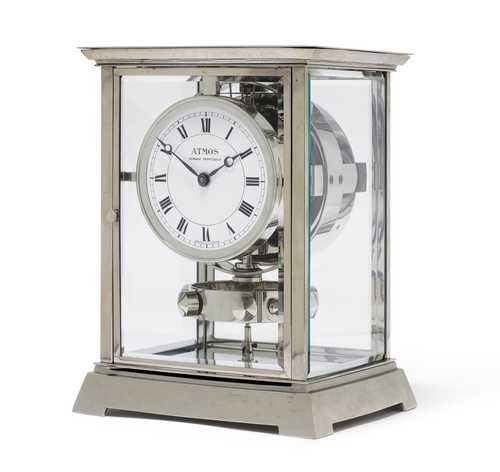

Atmos II
1939–1950
The first “real“ Atmos clock, powered by a gas-filled metal bellow, was developed in 1935–38 and then offered for sale. The movement was further developed and a new case with glass discs was designed. The typical design, which remained until the early 1990s, was created. Over the years, there were minor changes to the design, such as the adjustment knob which points backwards to the pressure box, or forwards, towards the dial. The plate shows the Geneva finish, which is still common today. The Atmos II was sold from 1939 on and went into serial production for the first time. The myth of the perpetual motion machine was created.
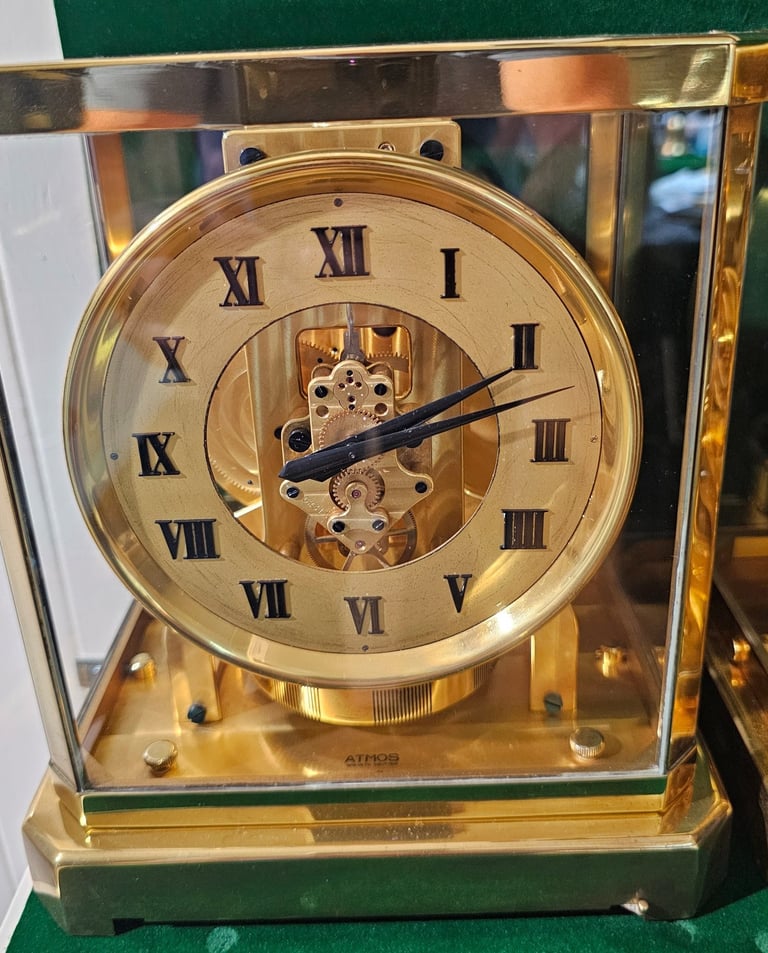

Atmos III (519)
1950–1955
With the caliber 519, further minor changes were made. The fine adjustment was revised and placed centrally at the front over the dial, the plate width is reduced and the construction of the case is somewhat simplified—overall, the clock becomes more suitable for mass production. The movement remains mostly unchanged. The number of clocks produced increased from per year 2,000 in 1948 to 10,000 by 1951.
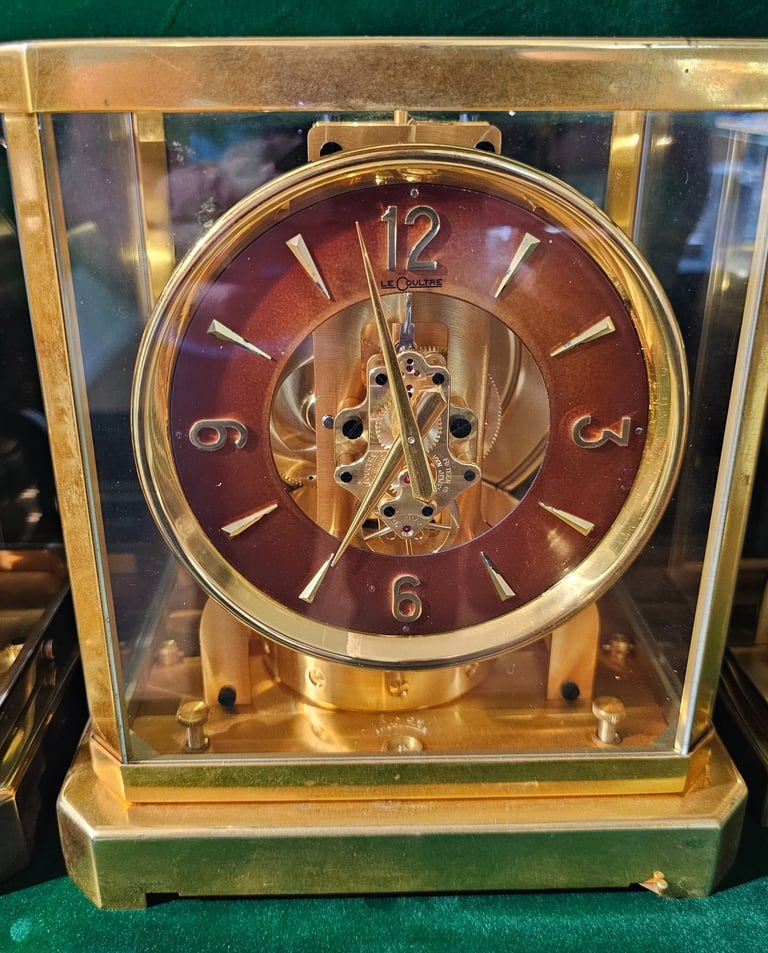

Atmos IV (522 and 532)
1954 - early 1955
The caliber 522 and 532 were special models that were produced only briefly and are considered intermediate models. Today, the caliber 522 is often called “Tuxedo“ because of the prominent front door, which is decorated with the striking Geneva cut. The caliber 532 differs only slightly from the caliber 526, the case front was reinterpreted and given a new design. This model was produced only in small numbers.
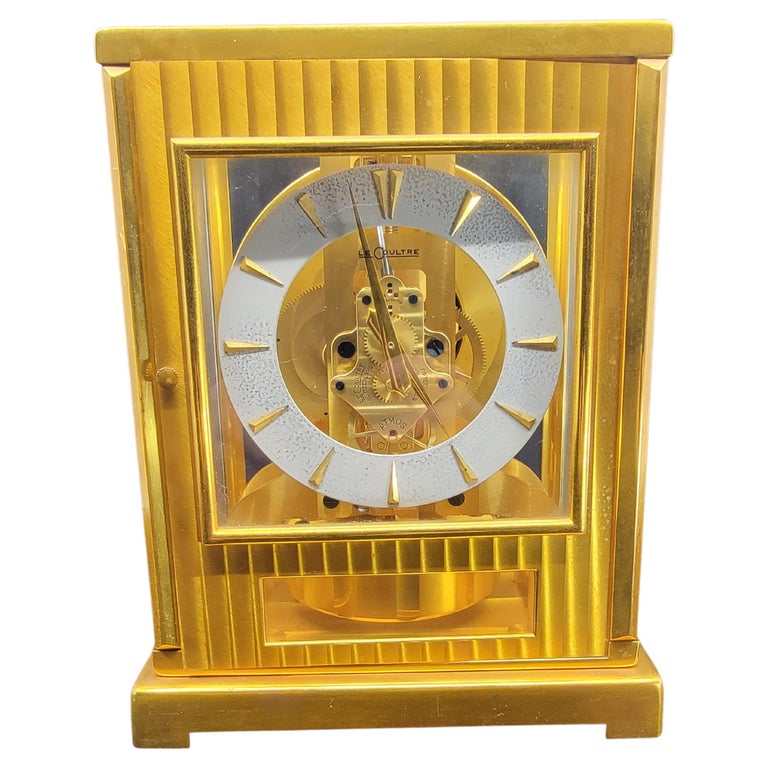

Atmos V (526)
1954 - 1958*
*in small numbers for decades later and as the basis for special models eg "Vendome"
The serial production of the Atmos clock continues with the caliber 526. The construction of a new movement allows the production of 1,500 Atmos clocks per month, the clock is presented in Switzerland as a state gift, in the U.S. very often as a corporate gift for employees to celebrate an anniversary. Therefore, this model is also often found engraved or with a glued plaque on the front. Above mentioned 522 is produced in parallel.
The caliber 526 itself differs mainly by smaller dimensions, which also gives it the nickname “Baby Atmos“. The case was modified, the pendulum latch is located inside under the dial—no longer under the case back. Furthermore, the clock no longer has a glass cover, which is removable, but a small front door, which can be opened with a gold-plated brass button. The movement is built into this classic clock case, but also in special versions of the coming decades. For example, in the model Atmos Vendome and Atmos Vendome Paris.
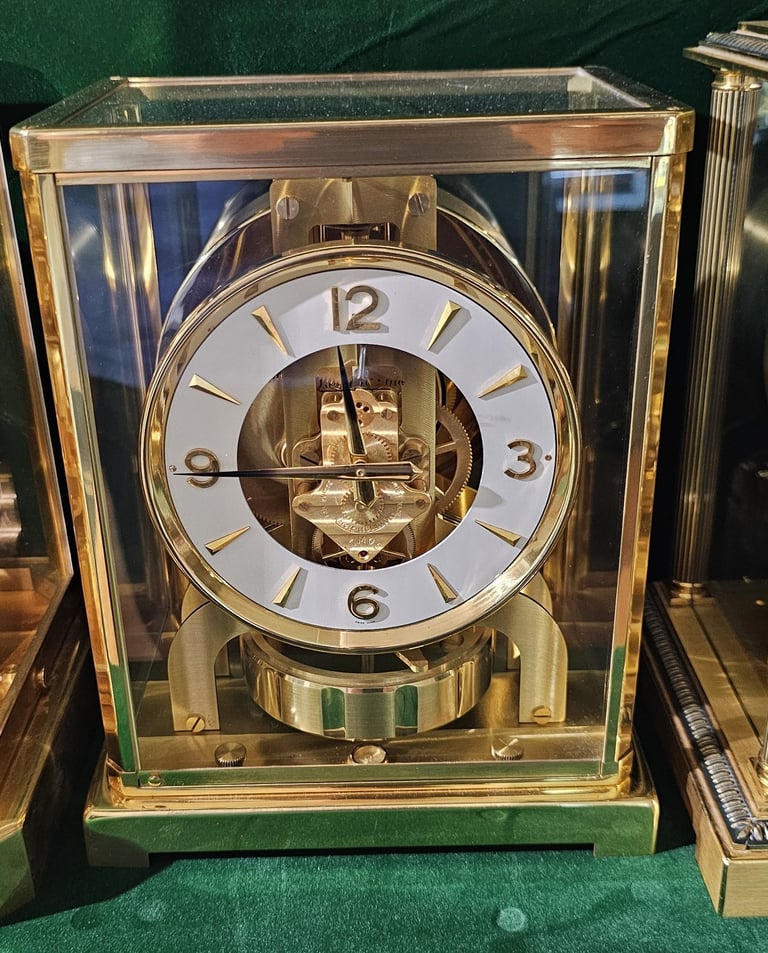

Atmos 526 Vendome
Based on the 526, with larger dimensions, both the dial and the generally architectural design of this clock are reminiscent of classicism. That is why it became famous under the names "Style", "Empire" or "Directoire".
The Atmos Vendome was produced in different variations. With a gilded base or also with a marble base. The first Vendome appeared in 1962
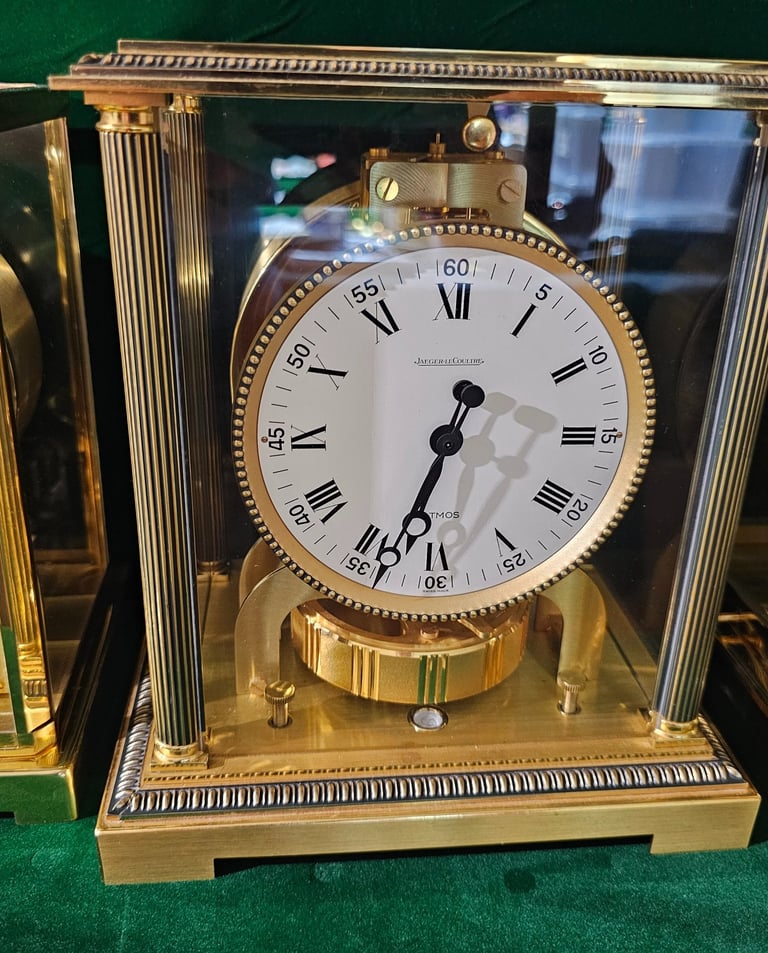

Atmos VI (528-6 & 528-8)
1957 to 1983
The larger original model of the Atmos clock is revived. The success of the brand leads to the launch of even more models. The old dimensions are combined with the new advanced movement with slimmer plates. The clock has initially a "lift off" hood like the Atmos II and Atmos III with the model 528-6, which is changed to a front door with a small pusher in the 528-8.

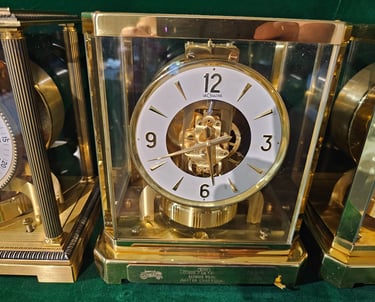
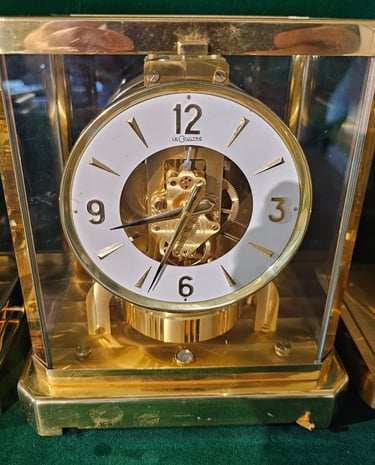

Atmos VII (540/560)
1984 to present
The redesign of a classic
From 1983, the caliber 540, which had been completely overhauled in design, was listed in the catalogs. The focus was on a slimmer design and modified proportions in detail. Technically, the movement was completely rebuilt: The movement plate, the pendulum suspension, and all gears were completely redesigned. Also, the mainspring barrel was moved and, for the first time, a moon phase was possible—and that without an extra gear! This was the first “complication“ of the Atmos watch, the so-called caliber 544—a milestone.
In the beginning, this caliber is also equipped with a temperature and hygrometer. Not visible from the outside, but of great importance: The manufacturing process of the pressure box, the heart of every Atmos clock, was fundamentally revised. The gas-filled metal bellows, which react very sensitively to any change in temperature, have now been manufactured using an industrial plasma welding process, which greatly extends its service life and thus helps the Atmos watch to last even longer. Different models, dials, and caliber variants were introduced.
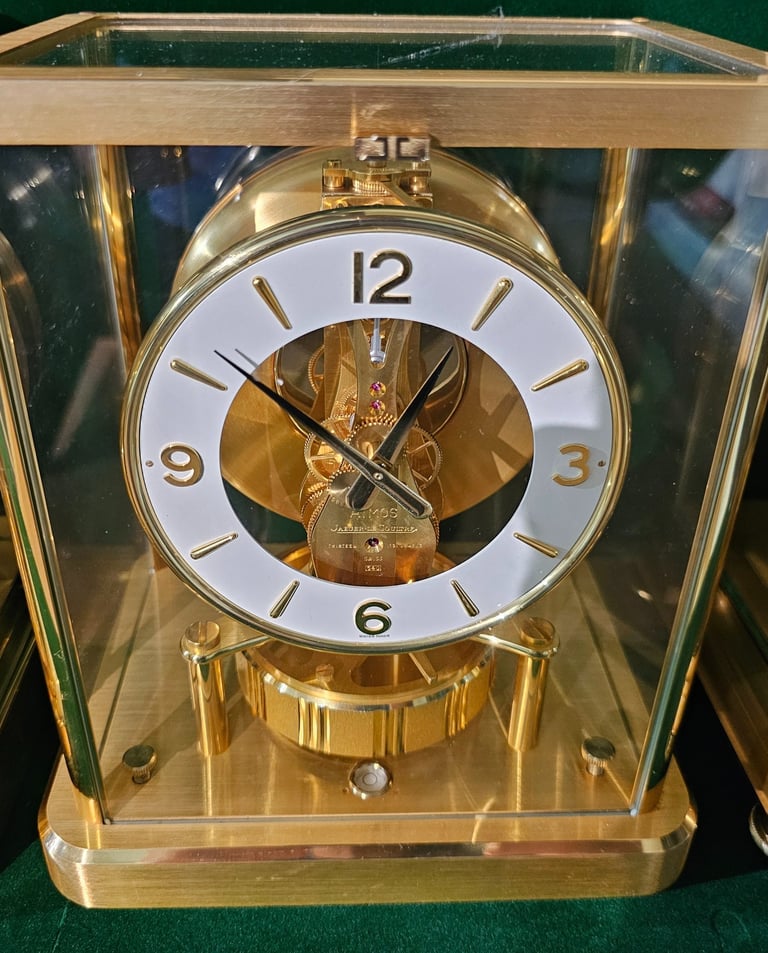

Special editions until 1983
Limited editions
Special mention should be made of various special editions of the Atmos clock, which have been produced again and again in small production runs, mostly for various company anniversaries. These include, for example, in 1979 the Atmos Jubilee (50th anniversary, limited to 1,500 clocks), the Atmos Prestige (seen here, limited to 3,000 clocks) and later the Atmos Opera.
Contemporary technology is inserted into the original prototype design of the Reutter clocks of the 1930s. As very limited editions, these models continue to enjoy great popularity today.
The detailed design with faceted discs and large screwed balance weights testifies to the flair of the past era
